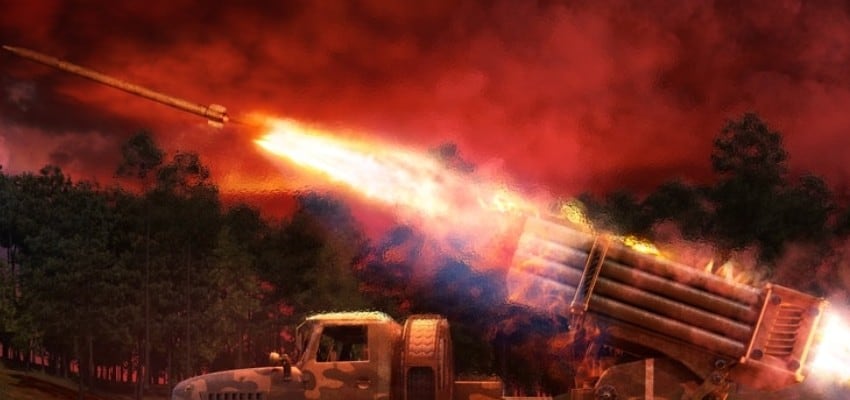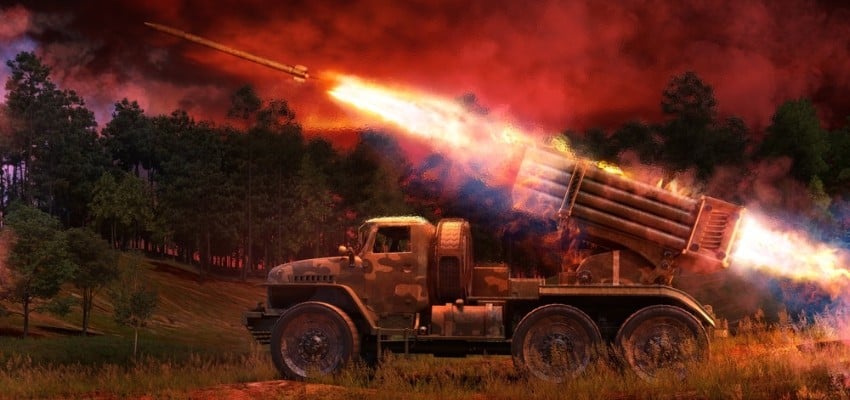|
|
Content Assessment: Momentum Challenges? Ukraine Conflict Assessments in Maps (July 24 - 28, 2022)
Information - 89%
Insight - 88%
Relevance - 90%
Objectivity - 91%
Authority - 93%
90%
Excellent
A short percentage-based assessment of the qualitative benefit of the post highlighting the recent Ukraine conflict assessments in maps from the Institute for the Study of War.
Editor’s Note: One of the most accurate and detailed sources for ongoing updates on the Ukraine crisis is the Ukraine Conflict Update from the Institute for the Study of War. The Institute for the Study of War (ISW) is a 501(c)(3) organization and produces strictly non-partisan, non-ideological, fact-based research. ISW seeks to promote an informed understanding of war and military affairs through comprehensive, independent, and accessible open-source research and analysis. ISW’s research is made available to the general public, military practitioners, policymakers, and media members. Providing a daily synthesis of key events related to the Russian aggression against Ukraine, ISW updates may benefit cybersecurity, information governance, and legal discovery professionals as they follow the business, information technology, and legal trends and trajectories impacted by and stemming from the current Ukraine conflict.
Assessment and Maps*
Ukraine Conflict Assessments – An Overview in Maps
- Institute for the Study of War (ISW), Russia Team
- Critical Threats Project (CTP), American Enterprise Institute
General Assessment Background Info
- ISW systematically publishes Russian campaign assessments that include maps highlighting the assessed control of terrain in Ukraine and main Russian maneuver axes.
- These maps augment daily synthetic products that cover key events related to renewed Russian aggression against Ukraine.
The Russian Offensive Campaign Assessments
- July 28, 2022
- By Karolina Hird, Grace Mappes, Layne Phillipson, Katherine Lawlor, George Barros, and Frederick W. Kagan
Key Development
- Putin replaced Colonel-General Gennady Zhidko as deputy defense minister and head of the Main Military-Political Directorate on July 28.
Key Takeaways:
- Russian forces in Donetsk Oblast likely seek to capitalize on recent marginal territorial gains around Bakhmut and may deprioritize efforts to take Siversk.
- Russian forces conducted limited ground assaults northwest of Slovyansk and northeast and southwest of Bakhmut.
- Russian forces may be intensifying offensive operations around Avdiivka to reduce Ukrainian strikes in and around Donetsk City.
- Russian forces may be setting conditions for renewed offensive operations toward Kharkiv City.
- Russian forces attempted a limited ground offensive on the Southern Axis but are likely facing territorial losses in Kherson Oblast.
- Russian forces are attempting to preserve their ground lines of communication over the Dnipro River connecting Kherson City to rear areas in eastern Kherson Oblast.
- The Kremlin continued measures to compensate for officer and manpower losses in Ukraine.
- The Kremlin is continuing to institutionalize its occupation administrations in occupied parts of Ukraine to prepare for sham referenda, annexation, and integration into Russia.
- Russian occupation forces are continuing to pressure Ukrainian civilians in occupied areas to use Russian rubles and passports and to attend Russian-run schools, setting conditions for longer-term social control in occupied territories.
- July 27, 2022
- By Kateryna Stepanenko, Grace Mappes, Katherine Lawlor, George Barros, and Frederick W. Kagan
Key Development
- Russian forces appear able to sustain only two significant offensive operations in Ukraine at this time, one attempting to seize Siversk and the other advancing on Bakhmut.
Key Takeaways
- Russian forces currently appear able to sustain only two significant offensive operations in Ukraine, both in Donetsk Oblast, and the Russian offensive remains likely to culminate before seizing additional significant population centers.
- Ukrainian forces may have launched a localized counterattack southwest of Izyum.
- Russian forces attacked settlements east of Siversk and northeast and southeast of Bakhmut.
- Ground fighting is ongoing north of Kharkiv City.
- Ukrainian forces struck the Antonivskyi Bridge for the third time in ten days on July 27, likely rendering it unusable.
- The Mari El Republic north of Kazan sent two volunteer battalions to train and is forming a third battalion to deploy to Ukraine.
- Russian occupation authorities are importing Russians to work in occupied territories due to a lack of Ukrainian collaborators.
- Mariupol occupation authorities continue withholding humanitarian aid to force civilians to cooperate with and work for the occupation administration.
- July 26, 2022
- By Karolina Hird, Kateryna Stepanenko, Katherine Lawlor, Layne Philipson, and Frederick W. Kagan
Key Development
- Russian-backed proxy leadership continues to enunciate deadlines for the capture of additional Ukrainian territory, likely to support ongoing preparations for referenda on the annexation of these territories to the Russian Federation.
Key Takeaways
- Russian proxy and occupation leadership is enunciating expedited deadlines for the capture of Ukrainian territory to align with the Kremlin’s efforts to prepare for the annexation of occupied territories into the Russian Federation.
- Russian forces gained marginal ground northeast of Bakhmut and are continuing to fight east and south of Bakhmut.
- Russian forces conducted a limited attack northwest of Izyum, likely to secure Russian rear areas on the Izyum-Slovyansk line.
- Russian forces conducted limited attacks southwest of Donetsk City near the Zaporizhia Oblast border.
- Russian forces focused on defending occupied lines and conducted a limited ground assault in northwestern Kherson Oblast.
- Ukrainian forces continued to strike Russian logistics nodes in Kherson Oblast.
- The Kremlin is continuing to constitute regional volunteer battalions for deployment into Ukraine.
- Ukrainian intelligence leaks continue to reveal the Kremlin’s annexation agendas for occupied Ukraine by way of falsified referenda.
- July 25, 2022
- By Karolina Hird, Kateryna Stepanenko, Katherine Lawlor, Layne Philipson, and Frederick W. Kagan
Key Development
- Russian forces made marginal territorial gains south of Bakhmut on July 25 but are largely suffering from the same fundamental limitations that previously prevented them from rapidly gaining substantial ground during offensive operations in Luhansk Oblast.
Key Takeaways
- Russian forces made marginal gains south of Bakhmut but are unlikely to be able to effectively leverage these advances to take full control of Bakhmut itself.
- Russian forces conducted limited ground attacks north of Kharkiv City, east of Siversk, and east of Bakhmut.
- Russian forces are continuing to fortify and strengthen positions in Zaporizhia and Kherson Oblasts in anticipation of Ukrainian counteroffensives.
- Ukrainian forces are continuing to strike Russian strongholds along the Southern Axis.
- Russian forces continued to withdraw military equipment from storage in Omsk and face challenges with repairing damaged combat vehicles.
- Russian occupation officials are continuing to set conditions for the annexation of occupied territories to the Russian Federation and to extend administrative control of occupied areas of Ukraine.
- July 24, 2022
- By Karolina Hird, Grace Mappes, Layne Philipson, George Barros and Frederick W. Kagan
Key Development
- Alarm in the Russian nationalist information space continues to grow as the pace of Russian operations slows in the face of successful Ukrainian high-mobility artillery rocket system (HIMARS) strikes on key Russian logistics and command-and-control nodes.
Key Takeaways
- Ukrainian officials are increasingly acknowledging Ukrainian counteroffensive operations in Kherson Oblast.
- The Kremlin is facing mounting (if still very limited) domestic dissent from ethnic minorities who are disproportionately bearing the burden of the Russian war in Ukraine.
- Russian forces attempted limited ground assaults northwest of Slovyansk, east of Siversk, and south of Bakhmut on July 24.
- Ukrainian strikes have damaged all three Russian-controlled bridges leading into Kherson City within the past week.
- Russian forces attempted limited ground assaults in Kherson Oblast.
- The Kremlin continued constituting regional volunteer battalions and is leveraging private military companies’ recruitment drives to generate combat power.
- Russian occupation authorities continued setting conditions for annexation referenda in occupied territories and are recruiting Russian civilians for reconstruction efforts.
We do not report in detail on Russian war crimes because those activities are well-covered in Western media and do not directly affect the military operations we are assessing and forecasting. We will continue to evaluate and report on the effects of these criminal activities on the Ukrainian military and population and specifically on combat in Ukrainian urban areas. We utterly condemn these Russian violations of the laws of armed conflict, Geneva Conventions, and humanity even though we do not describe them in these reports.
Chronology of Maps from July 24-28 2022 – Mouseover to Scroll
Ukraine Conflict Maps - 072422-072822See the Institute for the Study of War Interactive Map of the Russian Invasion
Read the latest Ukraine Conflict updates from the Institute for the Study of War
* Shared with direct express permission from the Institute for the Study of War (ISW).
About the Institute for the Study of War Research Methodology
ISW’s research methodology relies on both primary and secondary sources, enabling researchers to develop a comprehensive understanding of the situation on the ground. In order to analyze military and political developments in any given area, ISW’s research analysts must wholly understand the systems of enemy and friendly forces. They must also understand the population demographics, physical terrain, politics, and history of that area. This lays the analytical foundation for understanding the reasons for particular developments and fulfilling their assigned research objectives. ISW analysts also spend time in places like Iraq, Afghanistan, and elsewhere in order to gain a better understanding of the security and political situation and to evaluate the implementation of current strategies and policies. Our researchers compile data and analyze trends, producing a granular analysis of developments in areas of research, producing an accurate, high-resolution, timely, and thorough picture of the situation. ISW’s research methodology guarantees its success and commitment to improving the nation’s ability to execute military operations, achieve strategic objectives, and respond to emerging problems that may require the use of American military power.
About the Institute for the Study of War
The Institute for the Study of War advances an informed understanding of military affairs through reliable research, trusted analysis, and innovative education. We are committed to improving the nation’s ability to execute military operations and respond to emerging threats in order to achieve U.S. strategic objectives. ISW is a non-partisan, non-profit, public policy research organization.
Learn more, get involved, and contribute today.
Additional Reading
- [Annual Update] International Cyber Law in Practice: Interactive Toolkit
- Data Embassies: Sovereignty, Security, and Continuity for Nation-States
Source: ComplexDiscovery























